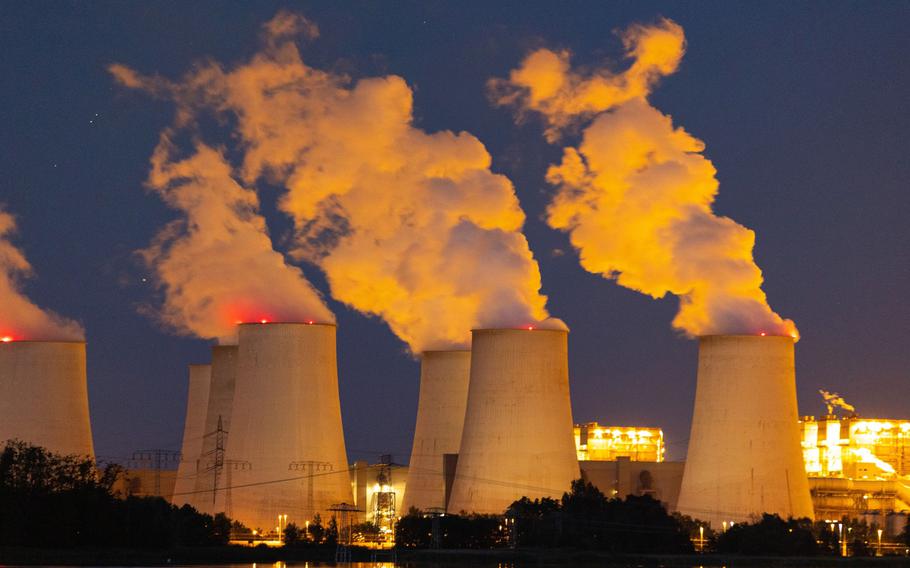
Cooling towers release vapor at the Jaenschwalde lignite coal-fired power plant, operated by EP Power Europe AS, in Peitz, Germany. (Krisztian Bocsi/Bloomberg)
A hunt by Europe’s coal consumers to replace Russian cargoes with shipments from across the globe has boosted imports to a key hub by more than a third, helping to fill severely depleted stockpiles.
Coal poured into the Antwerp-Rotterdam-Amsterdam region - a huge transport hub for energy and commodities — in the first half of this year, with imports surging 35% to 26.9 million tons compared with the same period last year, according to Kpler.
That has helped ARA coal inventories double to almost 6.6 million tons from more than a five-year low in the first quarter. Stockpiles are now close to record levels seen in 2019, according to Kpler. On the downside, the flood of imports is contributing to major congestion at the ports.
Shipments are soaring as the region scrambles to replace purchases after Moscow’s invasion of Ukraine, said Matthew Boyle, lead analyst for dry bulks, gas and LNG at Kpler Insight. Helping to fill the gap is more coal from the United States, Colombia and Australia — countries that tend to produce better-quality or so-called high-calorific value material that releases more heat and energy when burned.
The competition for a fuel many want to consign to history is escalating as power generators across Asia and Europe seek to secure additional shipments amid an energy crunch. Germany and Austria are reviving idled coal power plants in response to Russian gas supply curbs, while Japan and South Korea are stockpiling the fuel ahead of hotter summer weather.
The worsening global fuel shortage has sent prices soaring, with European year-ahead benchmark coal futures surging to a record in June.
Australian exporters including Sydney-based Whitehaven Coal Ltd. have had supply requests from European nations, including Poland, and the firm previously offered 70,000 tons of coal in a government aid package sent to Ukraine.
Soaring differentials between European and Australian prices have made it viable for traders to send cargoes from the Asia-Pacific region, even after taking into account the high shipping cost for the longer journey. Some low-quality Indonesian coal has also made its way into Europe, although Kpler said they were likely blended with US material with higher calorific value.
The heavy inflow of coal shipments is exacerbating gridlock at the ports.
“We are seeing very high congestion for the main European ports,” said Abhinav Gupta, a drybulk shipping analyst at Braemar. There were 71 drybulk ships waiting at anchor at the area off Antwerp, Rotterdam and Amsterdam as of June 29, triple the five-year average of 24 ships for this time of the year.
Current waiting time for coal vessels amounts to about 10 days, according to Kpler, who said low river levels on the Rhine also contributed to delays. It expects that will improve to about eight days by mid-July.
Coal terminals are currently at full storage capacity, and transporting large volumes of the fuel inland “has become a challenge over the past few weeks,” the Rotterdam port said. The situation has been complicated by a shortage of barges, it said, as many vessels are tied up with Ukrainian iron ore and grain exports.